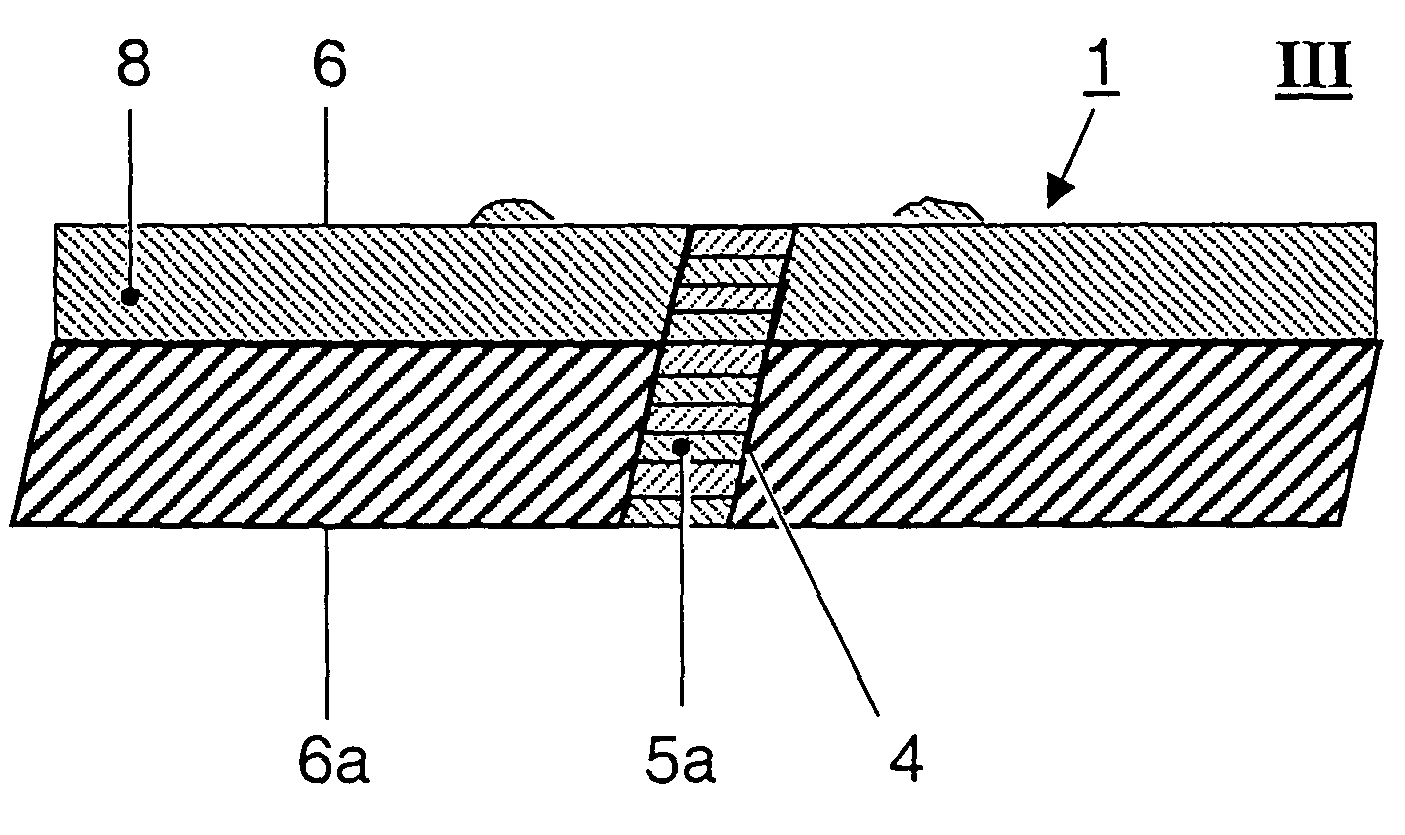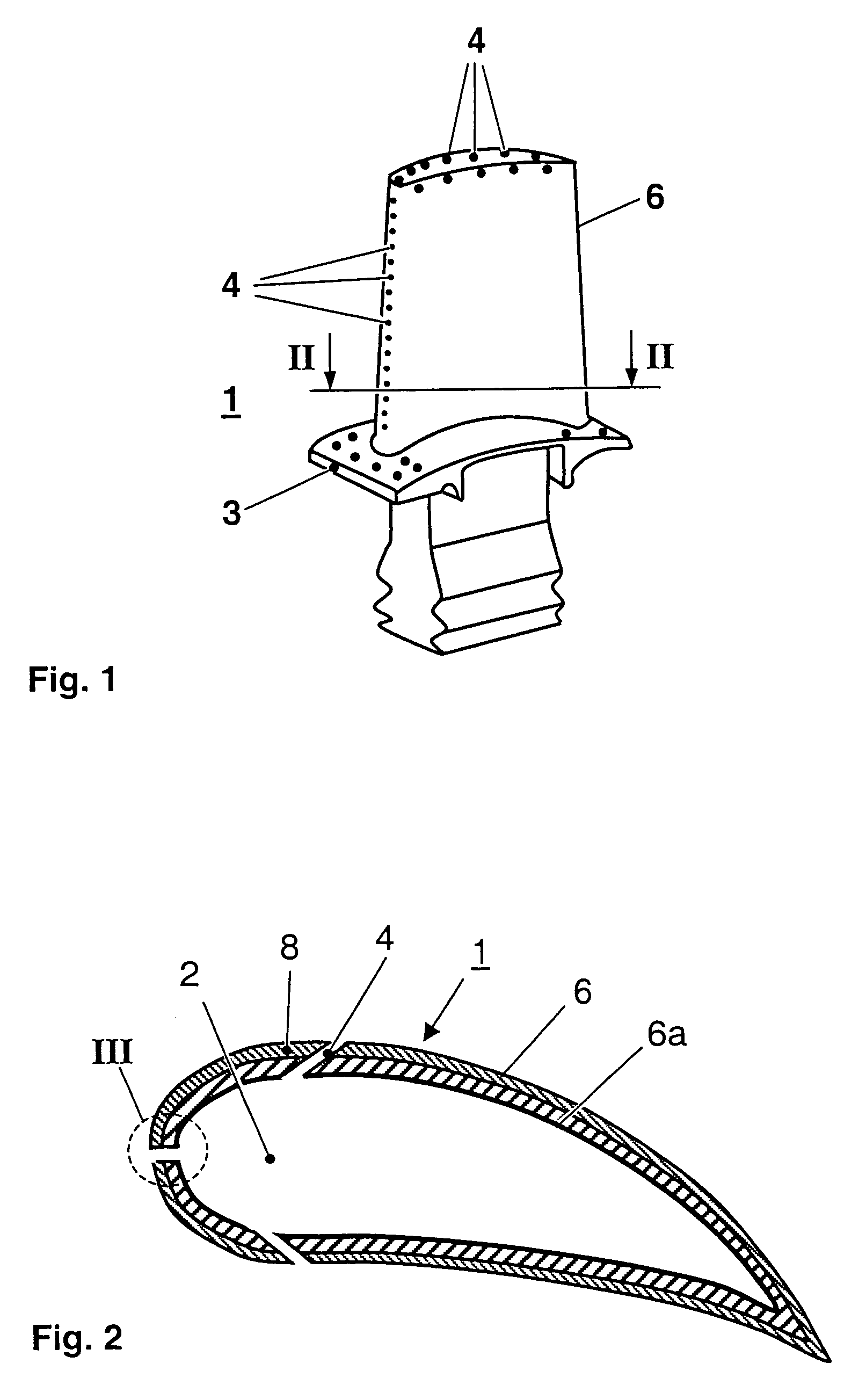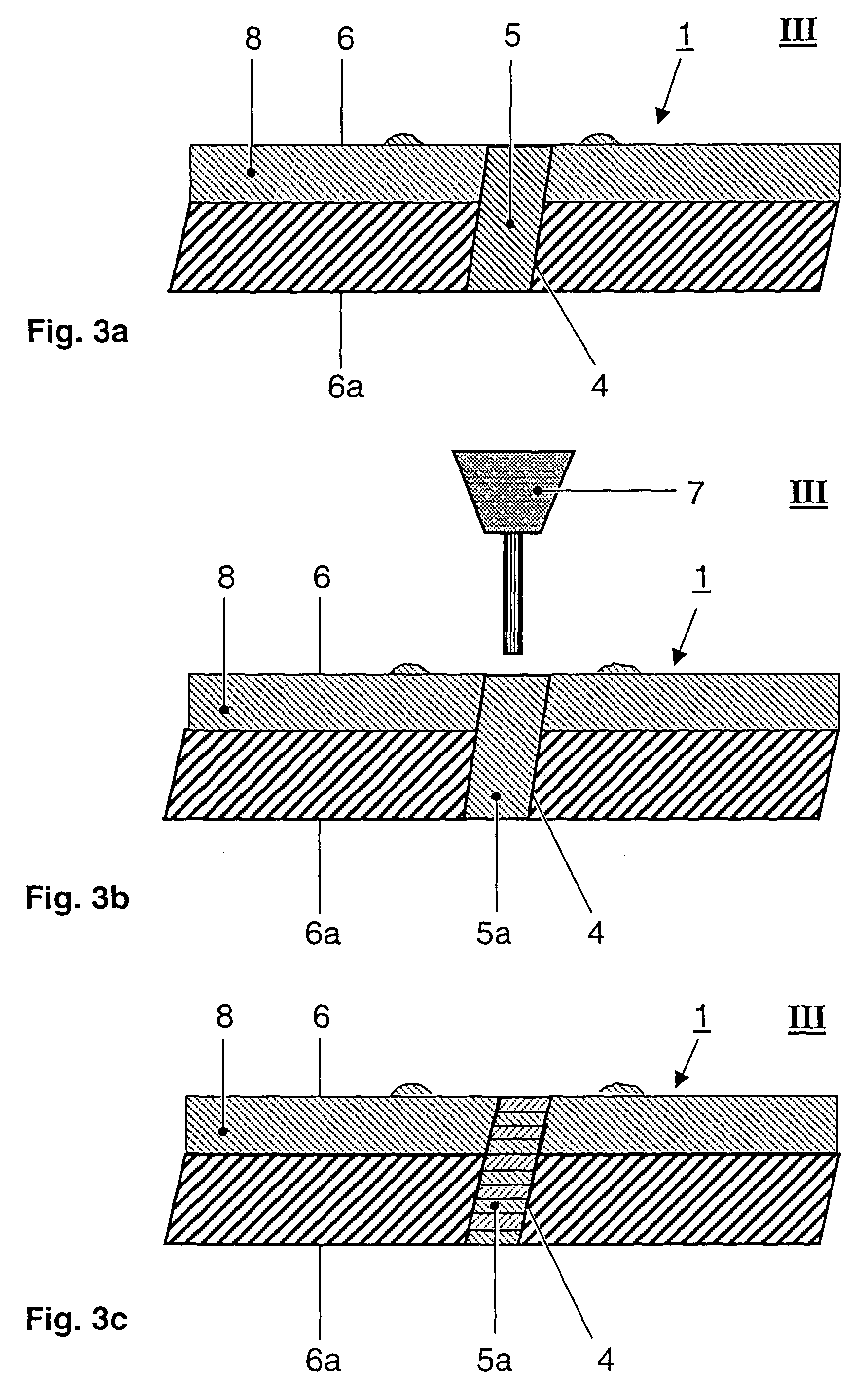Method of protecting a local area of a component
a local area and component technology, applied in the field of local area protection of components, can solve the problems of degradation and consumption of coatings, thermochemical and physical processing of blades after initial manufacturing, and the structural integrity of the underlying part itself is degraded, so as to achieve greater wear resistance, thermal and chemical resistance, and easy and fast processing
- Summary
- Abstract
- Description
- Claims
- Application Information
AI Technical Summary
Benefits of technology
Problems solved by technology
Method used
Image
Examples
example 1
[0046]In the first example, the cooling holes of a coated, gas turbine engine air cooled turbine nozzle article were protected from the influence of the chemically highly reactive baths and mechanical influences occurring during stripping processes of the coating.
[0047]To fulfil this purpose an appropriate masking substance was prepared by mixing suitable amounts of an adequate inorganic filler material to an UV-polymerizing agent. Thorough and controlled mixing ensured the preparation of a slurry excluding bubble formation and exhibiting the optimum viscosity required for this special kind of application. The blend contained 50% Al2O3-filler with a grain size of 80 μm and 50% resin. The preferential ranges for the constitution of the mixture are 20–60% of Al2O3-filler with a grain size in the range of 40–100 μm and correspondingly 80–40% of polymerizing resin. The blend was subsequently filled into a cartridge of a suitable application system, such as a high precision controlled pn...
example 2
[0048]Another use of the described, mechanically reinforced chemically and thermally highly resistant masking material includes the following steps:
[0049]To fulfil this purpose an appropriate masking substance was prepared by mixing suitable amounts of an adequate inorganic filler material to an UV-polymerizing agent. Thorough and controlled mixing ensured the preparation of a corresponding slurry excluding bubble formation and exhibiting the optimum viscosity required for this special kind of application. The blend contained 60% of Al2O3-filler with a grain size of 100 μm and 40% of resin. The preferential ranges for the constitution of the mixture are 30–75% of Al2O3-filler with a grain size in the range of 50–120 μm and correspondingly 70–25% of polymerizing resin. The blend was subsequently filled into a cartridge of a suited application system such as a high precision controlled pneumatic syringe. The slurry was applied manually onto acid sensitive structures such as brazed joi...
PUM
| Property | Measurement | Unit |
|---|---|---|
| grain size | aaaaa | aaaaa |
| grain size | aaaaa | aaaaa |
| diameters | aaaaa | aaaaa |
Abstract
Description
Claims
Application Information
 Login to View More
Login to View More - R&D
- Intellectual Property
- Life Sciences
- Materials
- Tech Scout
- Unparalleled Data Quality
- Higher Quality Content
- 60% Fewer Hallucinations
Browse by: Latest US Patents, China's latest patents, Technical Efficacy Thesaurus, Application Domain, Technology Topic, Popular Technical Reports.
© 2025 PatSnap. All rights reserved.Legal|Privacy policy|Modern Slavery Act Transparency Statement|Sitemap|About US| Contact US: help@patsnap.com



